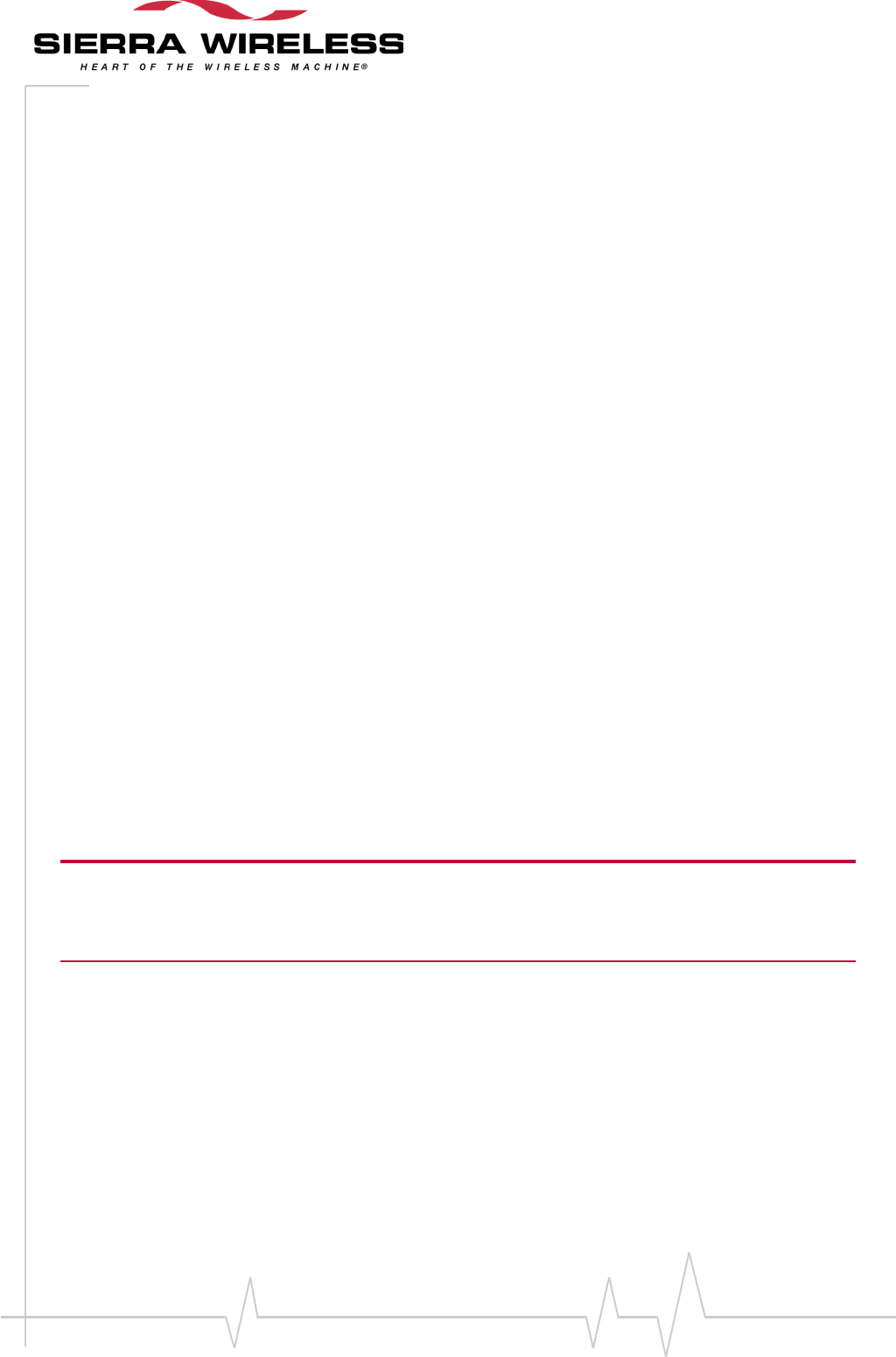
WA_DEV_W218_PTS_002 Rev 005 Page 39 of 109
Product Technical Specification &
Customer Design Guidelines
5-wire serial interface hardware design:
Signal: CT103/TXD*, CT104/RXD*, ~CT105/RTS*, ~CT106/CTS*
The signal ~CT108/DTR* must be managed following the V24 protocol signaling if we want to
use idle mode.
For detailed configuration, please refer to Figure 10 Example of V24/CMOS Serial Link
Implementation for 5-wire UART.
4-wire serial interface hardware design:
Signal: CT103/TXD*, CT104/RXD*, ~CT105/RTS*, ~CT106/CTS*
The signal ~CT108/DTR* can be looped back to ~CT107/DSR from both the WISMO218 side
and from the DTE side.
For detailed configuration, please refer to Figure 9 Example of V24/CMOS Serial Link
Implementation for 4-wire UART.
2-wire serial interface hardware design:
This case is possible for a connected external chip, but it is not recommended.
The flow control mechanism has to be managed from the customer side.
Signal: CT103/TXD*, CT104/RXD*
The signal ~CT108/DTR* can be looped back to ~CT107/DSR from both the WISMO218 side
and from the DTE side.
The signals ~CT105/RTS*, ~CT106/CTS* are not used, please configure using the AT
command, AT + IFC = 0,0 (see document [2] WISMO218 AT Commands Manual).
The signal ~CT105/RTS* can be looped back to ~CT106/CTS* from both the WISMO218 side
and from the DTE side.
For detailed configuration, please refer to Figure 8 Example of V24/CMOS Serial Link
Implementation for 2-wire UART.
Note: The loop back connection of ~CT108/DTR* to ~CT107/DSR is not allowed when the case
AT+PSSLEEP=0 is used, for which sleep mode entry is ~CT108/DTR* level dependent. (Refer to
Note 1 of the Power Consumption section. In order to go to sleep mode properly under such
configuration, AT+PSSLEEP=1 should be used instead. For details, please refer to document [2]
WISMO218 AT Commands Manual.
* According to PC (DTE) view


















